
The devastating glacier collapse in Blatten: what next?

Two weeks after a massive landslide wiped out most of the mountain village of Blatten in the Swiss Alps, talk of reconstruction is picking up, but huge challenges remain. A round-up of the latest developments.
On May 28, a huge landslide of mud, ice and debris engulfed the village of Blatten in the Lötschental valley in canton Valais. Ten million tonnes of rock from the crumbling Kleines Nesthorn fell onto the Birch Glacier, which causedExternal link the glacier to collapse, sending clouds of material down the mountain.
Buildings that weren’t buried by the landslide were submerged in a lake created when the mass dammed the small Lonza River nearby. Officials estimate that 90% of the village was destroyed. The 300 residents had been evacuated ahead of the disaster, but a 64-year-old man is still missing. Blatten municipality remains off limitsExternal link due to ongoing dangers.
“Blatten still has a future,” declared the mayor, Matthias Bellwald, immediately after the disaster. “We’ll go back there.”
Where and how will “New Blatten” be built?
At a public meeting in Wiler on June 12, Blatten authorities surprised attendees by presenting a roadmap to rebuild the village over the next three to five years. Bellwald said two nearby hamlets spared by the landslide – Eisten and Weissenried – could be developed into “New Blatten”, together with the existing centre of Blatten.
Initial work will begin on developing the two hamlets this year. An emergency access road is already under construction, and water, sewage and electricity supplies are to be provisionally installed. In 2026, further clean-up and excavation work is planned, including emptying the dammed lake and channelling the Lonza.
Under the ambitious plan, the first temporary buildings would be erected in 2027, and construction of a new village centre, with multi-purpose buildings, a church, village shop and hotels would begin in 2028. The municipality also plans to develop new housing. The first people should be able to settle in the village centre of Blatten again by 2030, says Bellwald. According to the Neue Zürcher Zeitung (NZZExternal link), the architecture firm Herzog & de Meuron has already created visual plans.
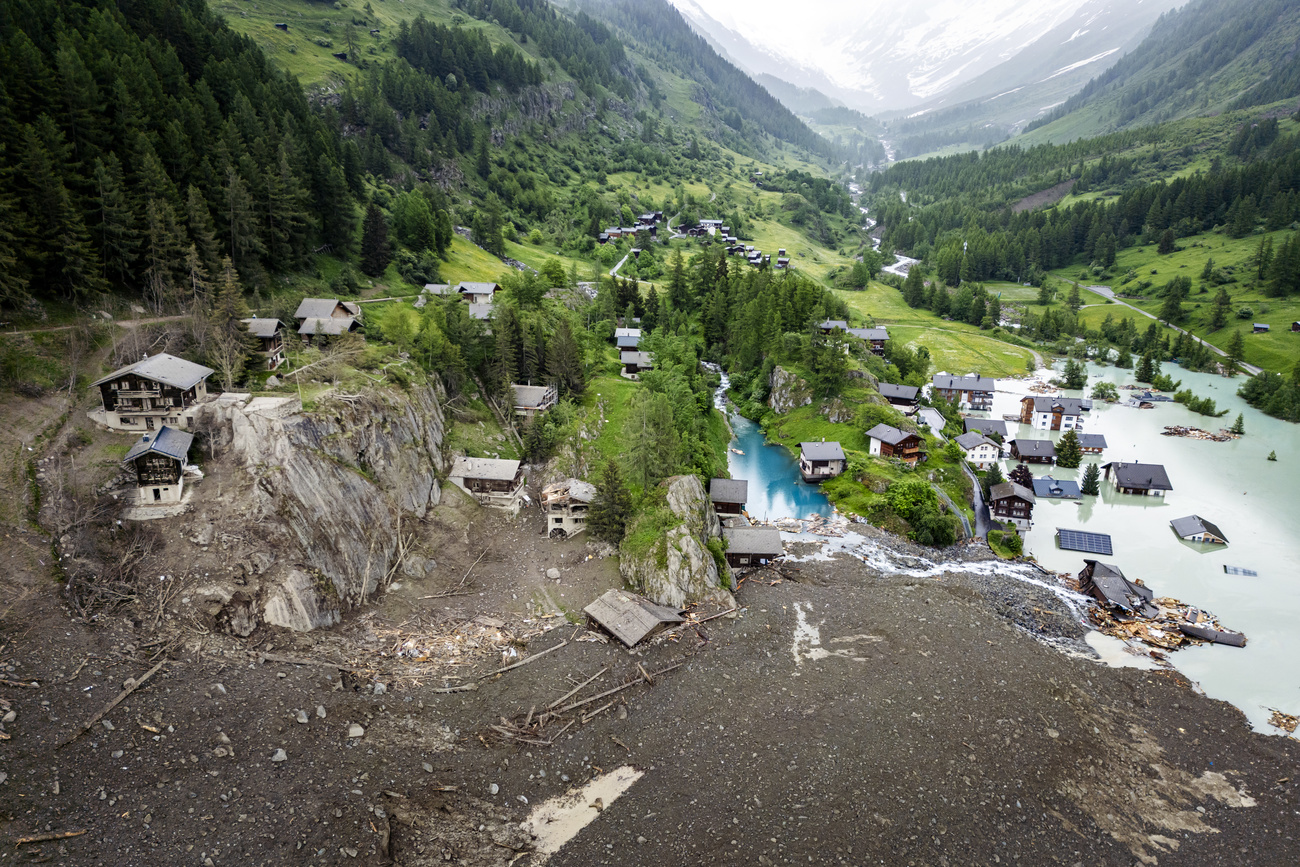
Bellwald said: “I’m not a utopian. I have a vision that is feasible. It’s a lot of work, that’s for sure.” The 200 people present welcomed the plan with a standing ovation.
Despite this huge burst of optimism two weeks after the disaster, many questions remain about authorisation procedures, the political process, financing, safety – and whether the people who were evacuated will actually return.
What do locals and experts say about rebuilding the village?
Beat Rieder, a Valais councillor who lives in the valley, also sees opportunities to relocate the villagers – at least some of them – to Weissenried and Eisten higher up on the south-facing flank. But the authorities must speed up procedures as time is tight, he urges.
Building on the debris cone, which is up to 35 metres thick in some places, is highly unlikely as it is extremely unstable. The idea of removing the huge piles of debris – nine million cubic metres – any time soon is also unrealistic and dangerous.
Based on previous experience of ice-rock avalanches, such as the one that hit the Karmadon Gorge in Russia’s North Ossetia 20 years ago, the ice in the Blatten debris cone will take years or even decades to melt, saysExternal link Christian Huggel, a climate researcher and geographer at the University of Zurich.
>> Video of the glacier collapse in Blatten on May 28, 2025.
The choice of a new site for Blatten is tricky. The Valais cantonal hazard map shows that almost the entire Lötschental valley is classified as a red zone, meaning it is considered to be at high risk of landslides, floods and, above all, avalanches. Outside these red zones, the terrain is very steep and available space is limited, according to an article in the NZZ am SonntagExternal link.
Andreas Zischg, a natural hazard expert at the University of Bern, says it would be possible to rebuild in one of the many red zones in the Lötschental using new infrastructure and barriers to block landslides.
“We can either build avalanche protection structures or erect large protective walls to reduce the danger to a medium or residual level. We can then rebuild in this zone,” he told Swiss public radio, RTS.
But this kind of infrastructure is expensive. Bondo, a mountain village of 200 inhabitants in canton Graubünden in southeastern Switzerland, was devastated by a landslide in 2017. New protective walls, bridges and retention basins cost CHF52 million ($64 million), almost half of which was covered by the federal government.
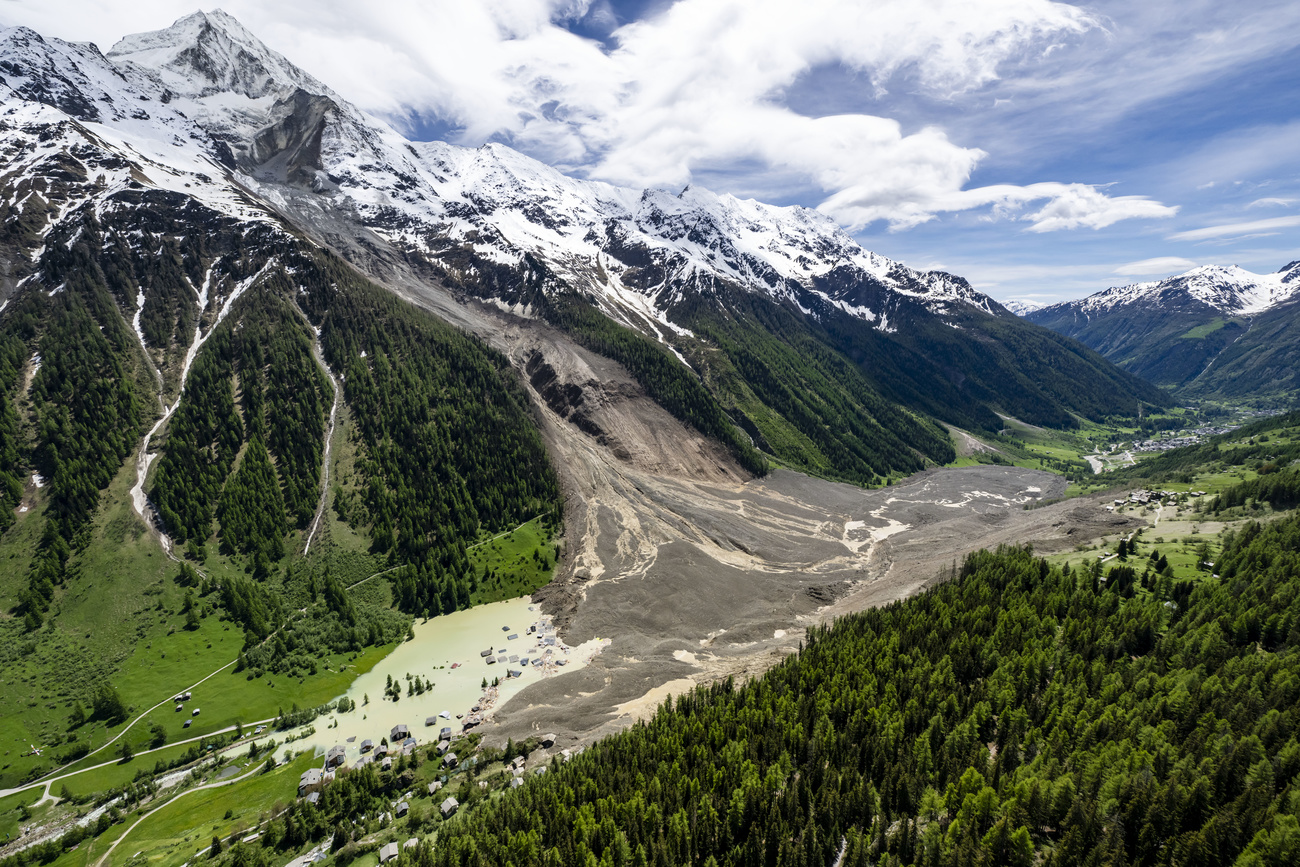
What is the financial situation following the Blatten disaster?
The total cost of the damage is still unclear but thought to be in the hundreds of millions of francs, according to Finance Minister Karin Keller-Sutter, who holds the rotating Swiss presidency this year.
The federal government, cantons and municipalities around Switzerland have been quick to show solidarity and pledge money to help the victims and reconstruction efforts. Among the larger contributions, parliament has approved CHF5 million in emergency funds. Swiss Solidarity, the humanitarian arm of the Swiss Broadcasting Corporation (SBC), SWI swissinfo.ch’s parent company, has raisedExternal link CHF17 million. Canton Valais has also promised CHF10 million and created a strategy group for the reconstruction of a new village.
Environment Minister Albert Rösti says he’s in favour of rebuilding Blatten in principle.
“We want to give the people of the Lötschental a future,” he told reporters in Bern last week. “But the decision to rebuild must be made by the people of Blatten. We want to create the framework to make such a decision possible […] The road is rocky, in the truest sense of the word. Complex questions arise, but the decisive factors will be safety and the needs of the population.”
What is your opinion? Join the debate:
What is the current situation in Blatten?
A huge grey-brown debris cone, a conical mass of rock, mud, ice and other material, stretches across the valley for roughly two kilometres. The level in the newly created lake has dropped slightly. The river now winds through the debris, a third of which is ice. Small landsides still roll down the Kleines Nesthorn occasionally. Most of the glacier has disappeared.
Raphaël Mayoraz, the Valais cantonal geologist, is closely monitoring the dangers. “On the Kleines Nesthorn, one million cubic metres of rock are still in movement, some of which fall occasionally. It moves a lot less quickly than in the past. But rockfalls from up there could reach the debris cone [in the valley],” he recently told RTS.
“In the hollow left by the glacier, a good trap for falling rocks, some of which can still pass over it, there is a layer of debris covered by ice. This still represents a danger, because if there’s a big storm, it could cause a huge mudflow that would spread over the debris cone.”
Mayoraz is also worried about the lake, which, if it were to suddenly break through, could result in a lake-outburst flood like the deadly Giétro glacier caseExternal link of 1818. Those living down the valley would be at risk. The danger level is still nine out of ten, he warns. “It’s only when it’s level two that we can relax,” he toldExternal link RTS.
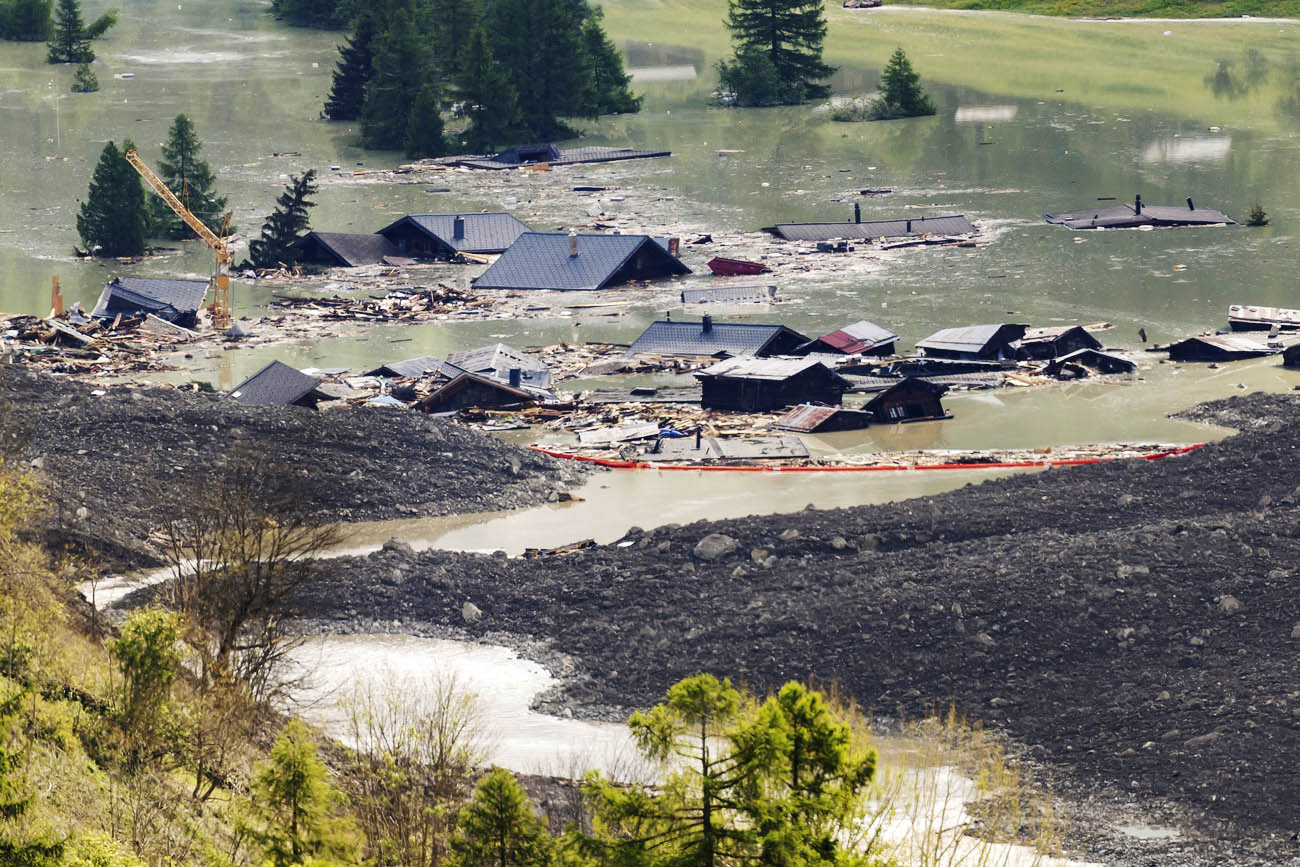
More
Blatten: what price for preserving Swiss mountain life?
Around 30 people living lower down the valley in Ferden, Kippel and Wiler, who were evacuated as a precautionary measure on May 29, were nonetheless able to return home last week. Tourists were also allowed to visit the lower part of the valley last weekend.
Meanwhile, around 200 civil defence workers, who have been monitoring the river and lake and overseeing the exclusion zone, have begun initial clean-up work.
>>Blatten is located in the Lötschental valley in canton Valais, southern Switzerland.
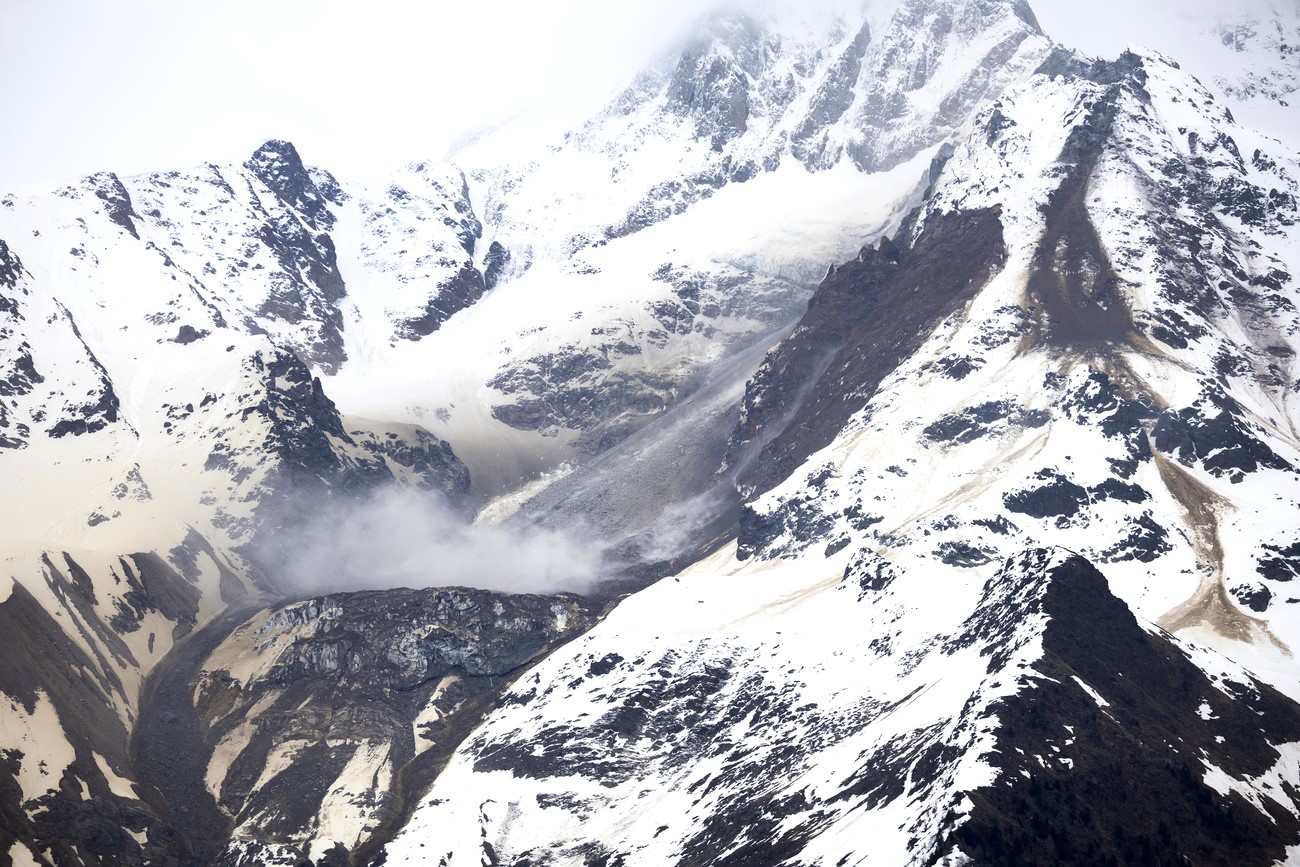
More
Why do Swiss mountains collapse? It’s complicated
Edited by Gabe Bullard/ml

In compliance with the JTI standards
More: SWI swissinfo.ch certified by the Journalism Trust Initiative

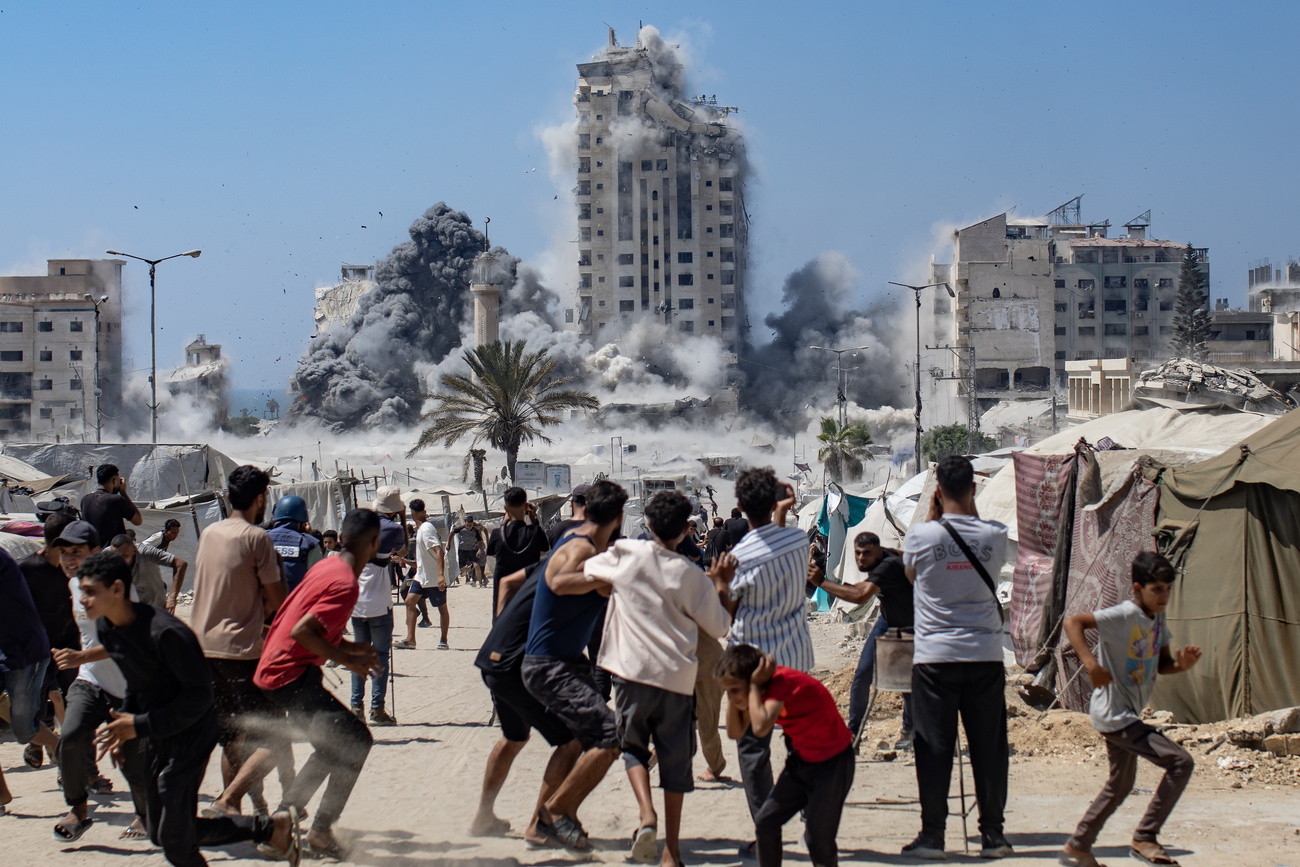





















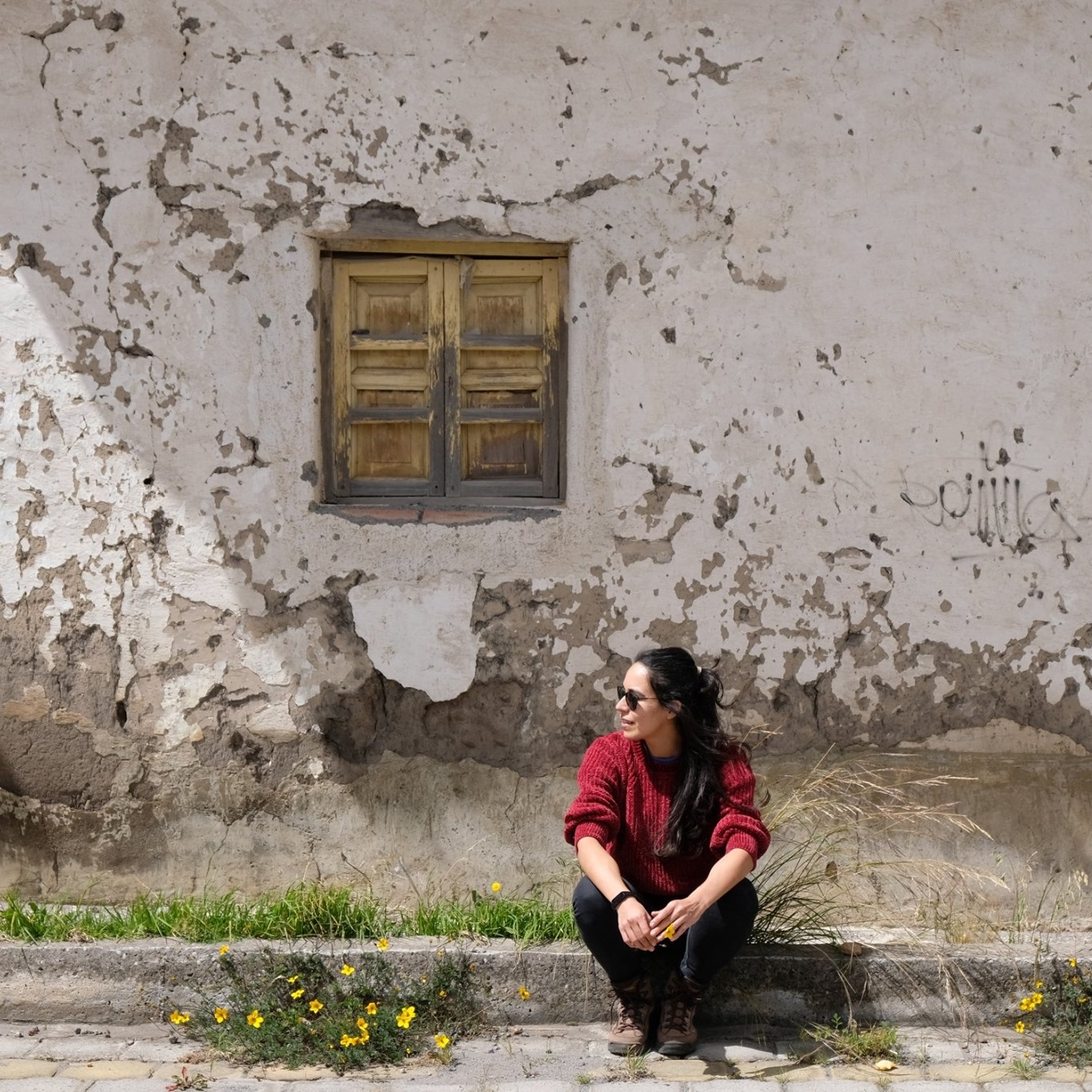



You can find an overview of ongoing debates with our journalists here . Please join us!
If you want to start a conversation about a topic raised in this article or want to report factual errors, email us at english@swissinfo.ch.